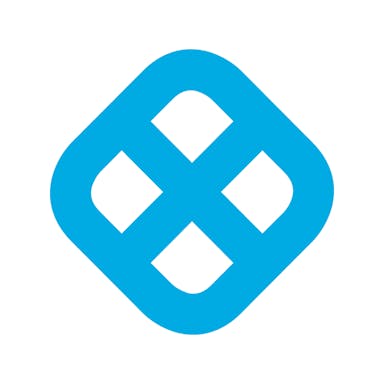Thesis
There were 26.9 million software developers across the globe in 2022, and the DevOps market was valued at $10.4 billion in 2023. Even minor gains in efficiency have the potential to engender significant returns, with software development transitioning from monolithic, manual architectures to more automated development workflows. Large enterprises consistently invest in DevOps engineers to build and maintain scripts for code deployment and remediation, with the constantly evolving software lifecycle contributing to the complexity of development. In 2019, developers reported spending 35% of their time maintaining, testing, and securing existing code, indicating one area of opportunity for greater efficiency.
In modern application development environments, developers work simultaneously on disparate features of the same application. However, merging branched sources can prove tedious given the impact of code changes on the broader codebase; continuous integration (CI) aids developers in merging code changes to a shared branch where changes are validated by automated unit and integration tests. Continuous integration ensures that applications can continue to function without breaking by allowing developers to remediate bugs before issues enter the codebase. Continuous deployment (CD) makes it so developers’ changes can go live by automatically deploying code changes to broader testing or production environments after the build stage. By expediting deployment to production, continuous deployment facilitates releases of smaller batches, enabling developers to troubleshoot issues in a more streamlined fashion.
For developers, CI/CD, or the process of delivering frequent changes to the codebase, has become the modus operandi for software delivery; the modern software distribution and delivery paradigm has evolved to necessitate automation from development to deployment. With the rise of modern applications and cloud-native architecture, developers increasingly require security safeguards and improved deployment velocity to facilitate more frequent releases. Implementing CI/CD in development setups has become crucial to simplifying the software development life cycle from design to deployment.
Harness is a company that provides an automated continuous integration and continuous delivery (CI/CD) solution, integrating with vendors across the DevOps stack to help developers develop, deploy, monitor, and remedy distributed microservices architecture. Harness’s mission is to empower teams to move fast and ship code without the fear of failed deployments, providing context for the application’s baseline environment and prompting automatic rollbacks when irregularities are detected.
Founding Story
Founded in 2017 by Jyoti Bansal (CEO) and Rishi Singh (CTO), Harness provides a continuous integration and continuous delivery (CI/CD) platform for both cloud and on-prem projects. As the founder and CEO of AppDynamics, Bansal oversaw its acquisition by Cisco in 2017 before co-founding Harness (along with the API security platform Traceable). Before founding Harness, Singh spent five years at Apple as a DevOps platform architect there where he supported deployments for internal application teams.
Harness sprung out of the founders’ experiences with DevOps, CI/CD, and broader software delivery. At AppDynamics, Bansal recognized that every team of 10-12 engineers required an additional person to oversee deployment scripting, tooling, and troubleshooting. Customers were often banks or larger retailers with several thousand engineers, so requiring additional deployment support could quickly become costly. In particular, Bansal recalls speaking with AppDynamics’ customers and realizing that companies were increasingly shifting their development frameworks to expedite updates. Approaches to software delivery were highly complex and manual, with only a handful of companies successfully implementing continuous delivery processes.
After realizing that delivering rapid changes without causing failures could prove difficult, Bansal and Singh set out to train data for supporting real-time development processes, laying down the framework for Harness’s CI/CD platform. Bansal and Singh founded Harness to simplify the software delivery process. With the mission to make continuous delivery accessible to every business, Harness raised $20 million in Series A funding from Menlo Ventures in October 2017, which is when the company emerged from stealth. When the team began making outbound sales calls the summer leading to this, they found that prospective customers responded positively and they were able to sign what they described as “big customers” by the time they emerged from stealth.
When the team set out to create Harness, manual deployment models of software delivery were incredibly risk-prone despite taking months to deploy. The company claims that by using Harness its customers were able to deploy in weeks or even hours, reducing errors by 99%. By October 2017, Harness completed between 25 and 30 beta installations in companies across several industries.
Product
Harness’s continuous delivery platform offers a mechanism by which developers can execute changes to users in a matter of hours via continuous verification. By applying continuous verification, the platform can prompt automated rollbacks when anomalies are detected from an application’s baseline environment. Instead of forcing developers to spend hours monitoring post-release activity, Harness enables teams to run multiple deployments synchronously without additional developer oversight.
The modern delivery pipeline requires developers to write code before it is tested, undergo security and compliance checks, and then engage in additional testing. After being deployed in a staging environment, followed by a limited production environment, code can then be widely deployed. But any number of issues can cause rollbacks in the delivery process, often frustrating developers who are forced to deliver code under time pressure only to have it shelved.
Harness manages the entire CI/CD cycle to help ensure both security and quality control via an intuitive visual builder. Once the deployment has been set in place, Harness ingests and analyzes data from data monitoring, logging, and testing systems to measure the impact of code changes or deployments.
Beyond CI/CD capabilities, Harness provides a platform for developers that automate much of the process of shipping code while ensuring that bugs don’t enter live codebases. Given notable vulnerabilities like SolarWinds and Log4j, clarity around what is being deployed and where has become critically important. Harness’s CI/CD approach incorporates OPA as an overarching framework for enforcing policies across the platform. By enabling developers to write policies-as-code, set the severity of policy violations, and generate audit trails, Harness standardizes compliance and security standards across the broader software delivery process.
Harness has broadly embraced open-source following its acquisition of Drone.io, a self-service continuous integration platform in August 2020. Instead of requiring scripts, pipelines are configured with simple files that can then be committed to git repositories, with each pipeline step executed inside an isolated Docker container downloaded automatically at runtime. By allowing developers to run CI pipelines in containers, developers can run pipelines without resource conflicts or bottlenecks in a simplified, scalable manner.
Harness operates an end-to-end solution for DevOps teams, with products ranging from CI/CD to feature flagging, cloud cost management, service reliability management, security testing orchestration, and chaos engineering.
Continuous Integration
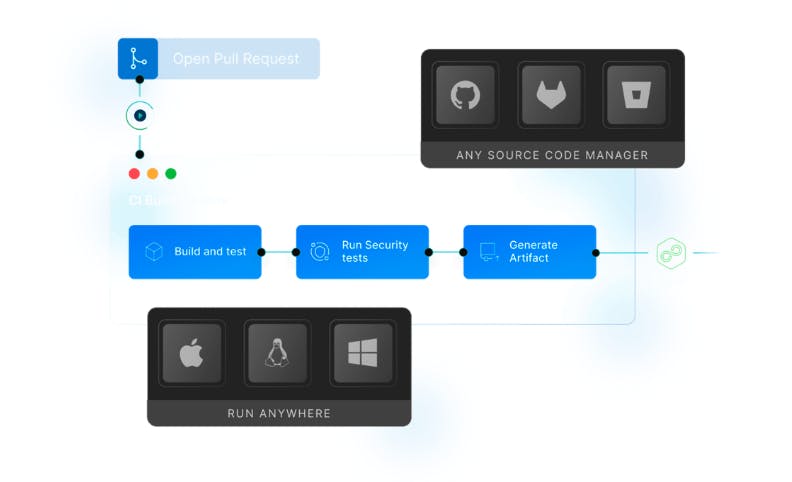
Source: Harness
Harness Continuous Integration simplifies the code development and testing process by allowing developers to build and test processes as CI stages; the Harness CI executes each pipeline step in containers (abstractions of the host OS that package code and dependencies, which enables code and relevant dependencies to be isolated from other steps).
The Harness Delegate controls all CI operations, connecting the Harness Manager in the given SaaS instance to all code repos, artifacts, infrastructure, and cloud providers. When creating a pipeline, developers specify which container to use, and Harness then locates and launches the container where the step should run. The Harness Delegate manages build infrastructure to run build jobs and testing as needed, sending data back to the Harness Manager; when a CI pipeline build finishes, the build infrastructure sends artifacts back to the registry provided. Given the complexity of events in more nuanced pipelines, Harness’s CI pipeline studio provides both a YAML (data serialization language) and visual editor in which developers can modify or rearrange steps and stages, or even configure pipelines-as-code.
Harness Test Intelligence also aids in expediting the testing cycle, improving test times by running only required unit tests and confirming the quality of code changes that triggered the build. Specifically, TI provides visibility into why certain tests were deemed relevant, providing additional context around how to improve test quality and coverage.
Continuous Delivery (CD) & GitOps
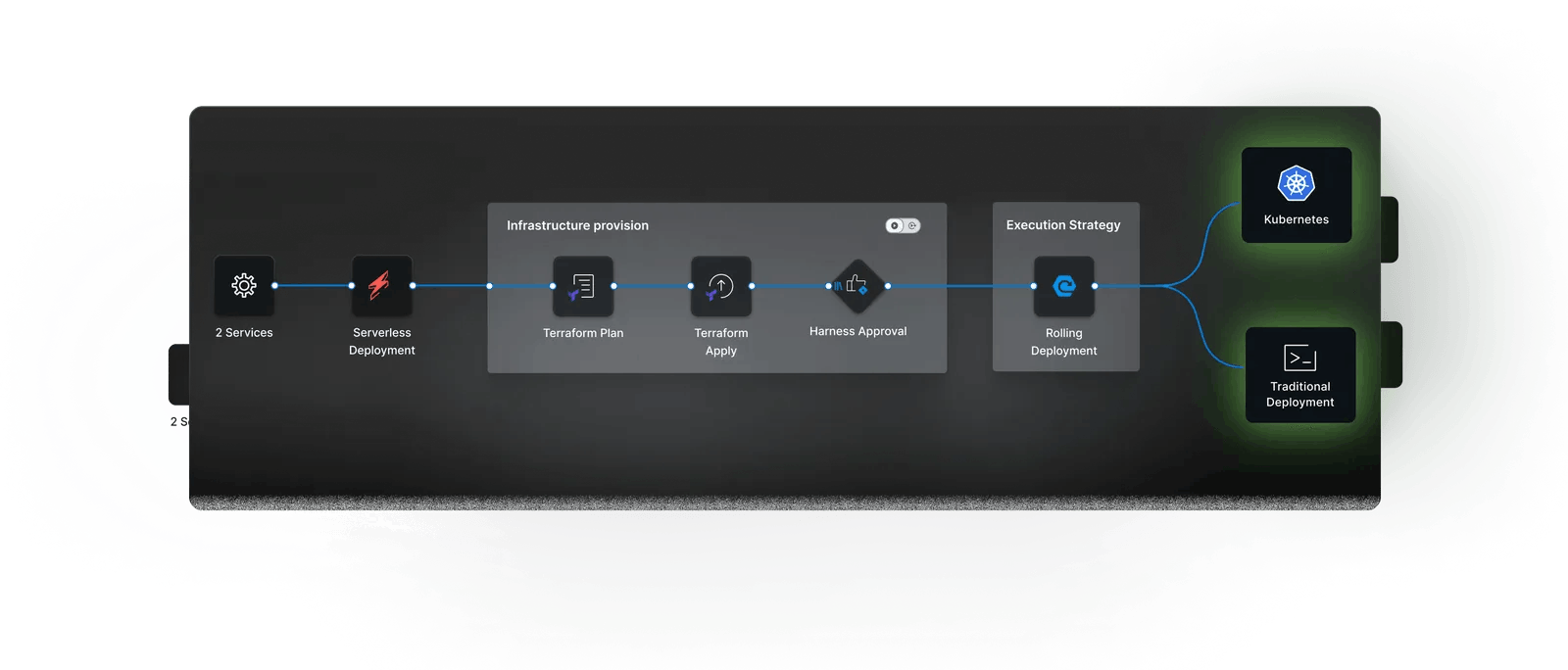
Source: Harness
Harness Continuous Delivery facilitates cloud native deployment without scripting, providing GitOps support (Argo, Flux), and automated verification of failed deployments. Advanced controls include intelligent rollback, enabling developers to synchronize key events across services to ensure databases are up prior to service rollout. Specific triggers tied to events can be initialized, with additional leverage looping or matrix actions to accommodate combinations. Harness GitOps integrates pipelines with existing Argo CD and Flux-managed workloads, creating a centralized view across clusters. By automating the path to production, Harness enables developers to create pull requests, sync applications, update configurations, and trigger rollbacks from pipelines.
Feature Flags
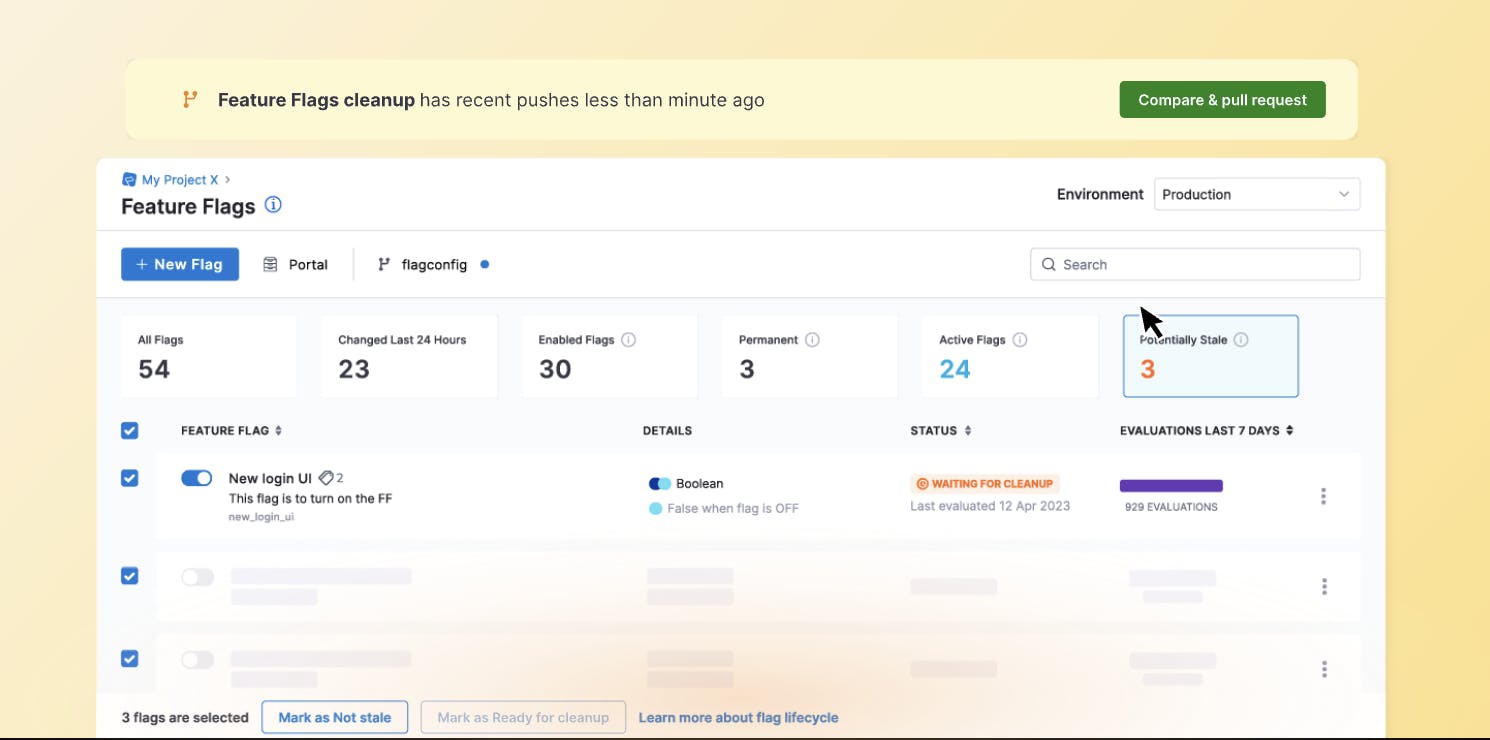
Source: Harness
Harness Feature Flags help dictate which users are provided access to the feature or who can test the changes, schedule progressive rollouts of the feature, and turn on features on specific dates. With continuous delivery, developers ship new code to production with greater frequency — feature flags provide more granular control, allowing developers to ship features only when they’re ready to do so.
Developers can test with real users in production environments but struggle to perform such testing without worrying about potential rollbacks or forcing redeployments. Feature flagging provides the creation of custom rules that enable bespoke access control to new features simply by toggling the specific feature flagging in question. In a similar manner to testing in production, a subset of users are selected to test new features in percentage deployments; developers can toggle the percentage of users permitted to test features while setting custom rules to restrict access to new features for targeted users.
Infrastructure as Code Management
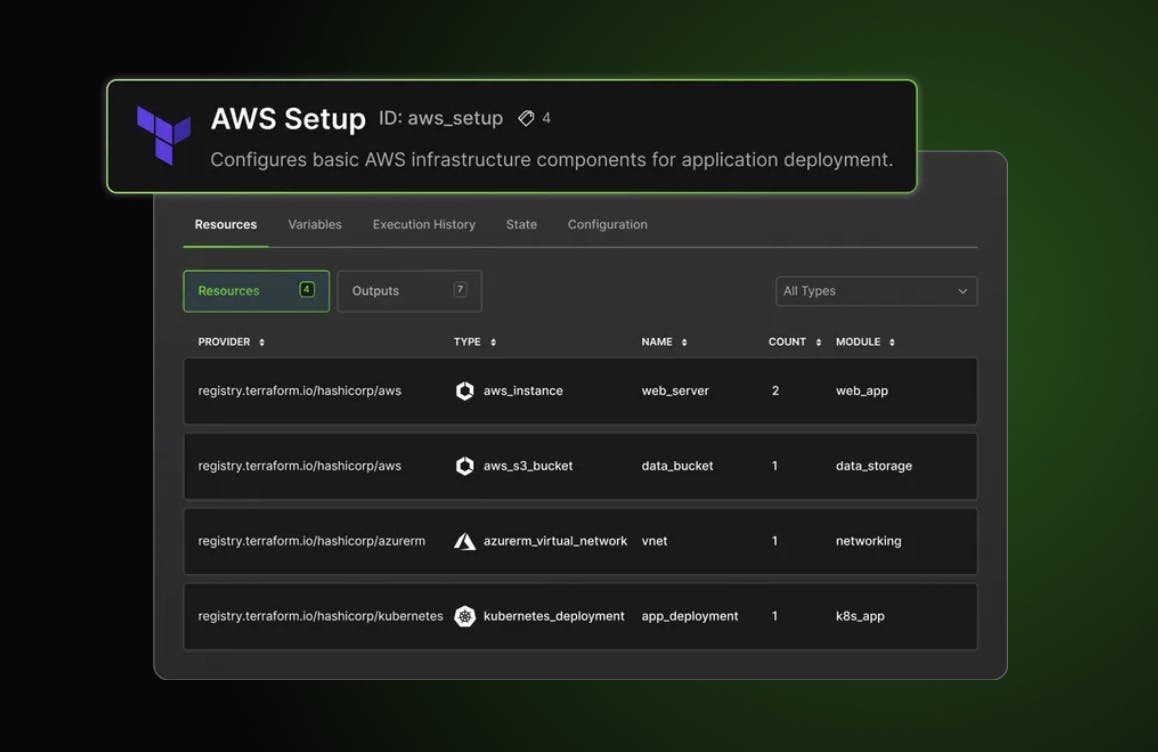
Source: Harness
Harness Infrastructure as Code Management (IaCM) empowers teams to manage their infrastructure using the same principles as application code. It allows for version-controlled infrastructure changes, automated deployments, and streamlined collaboration, all within a CI/CD pipeline. This is intended to allow for faster deployments, reduced costs, and improved security. IaCM features like self-service management, built-in cost estimation, and reusable templates promote efficient infrastructure utilization and best practice adoption.
Chaos Engineering

Source: Harness
Harness Chaos Engineering enables developers, SREs (site reliability engineers), and QA (quality assurance) teams to inject chaos experiments to assess the resilience of pre-determined faults or uncover other vulnerabilities. Chaos engineering broadly entails performing experimentation to determine software resilience in the face of turbulent or unexpected conditions, identifying potential issues, and minimizing downtime.
Harness CE provides the observability infrastructure necessary to validate steady-state hypotheses, running repeated experimentation with varied faults to simulate failure conditions. CE detects issues prior to them becoming higher severity issues that lead to downtime by stress testing applications in testing or production environments.
By simulating real-world events, CE helps development teams proactively design improvements to mitigate any points of failure, especially in modeling scenarios that are difficult to simulate in traditional testing environments. Harness CE takes a more holistic approach to chaos engineering, with an extensive fault library and ready-to-use experiments to construct nuanced experiments, along with a centralized control plane (Kubernetes-based microservice, cloud service, and virtual machine infrastructure coverage).
Native integration with Harness CD pipelines in tandem with Harness Continuous Verification (CV) helps facilitate hypothesis validation using probes; Harness aggregates chaos events, metrics, logs (audit and execution) to construct APM dashboards.
Service Reliability Management

Source: Harness
Harness Service Reliability Management helps engineering teams balance feature velocity and bug fixes with stability; Harness SRM facilitates SLO-driven software delivery, identifying and rolling back deployments while setting reliability guardrails within the CI/CD pipeline. Broadly, SLOs are availability targets measured by service level indicator (SLI) metrics or the minimum reliability level that should be consistently achieved. If a team is consistently meeting or exceeding reliability goals, they may be able to increase the velocity of feature releases; if established goals aren’t being consistently met, outages and overall performance degradation can occur.
Internal Developer Portal
Harness’s Internal Developer Portal (IDP) acts as a central hub for developers to manage and discover software within an organization. It provides a single platform for creating new software components quickly while adhering to company best practices. The portal also allows users to manage existing software by seeing its health, deployments, and alerts and to explore the internal ecosystem, finding technical documentation, APIs, and services. The portal also empowers self-service for tasks like onboarding new services, while measuring their maturity and enforcing DevOps best practices.
Software Engineering Insights
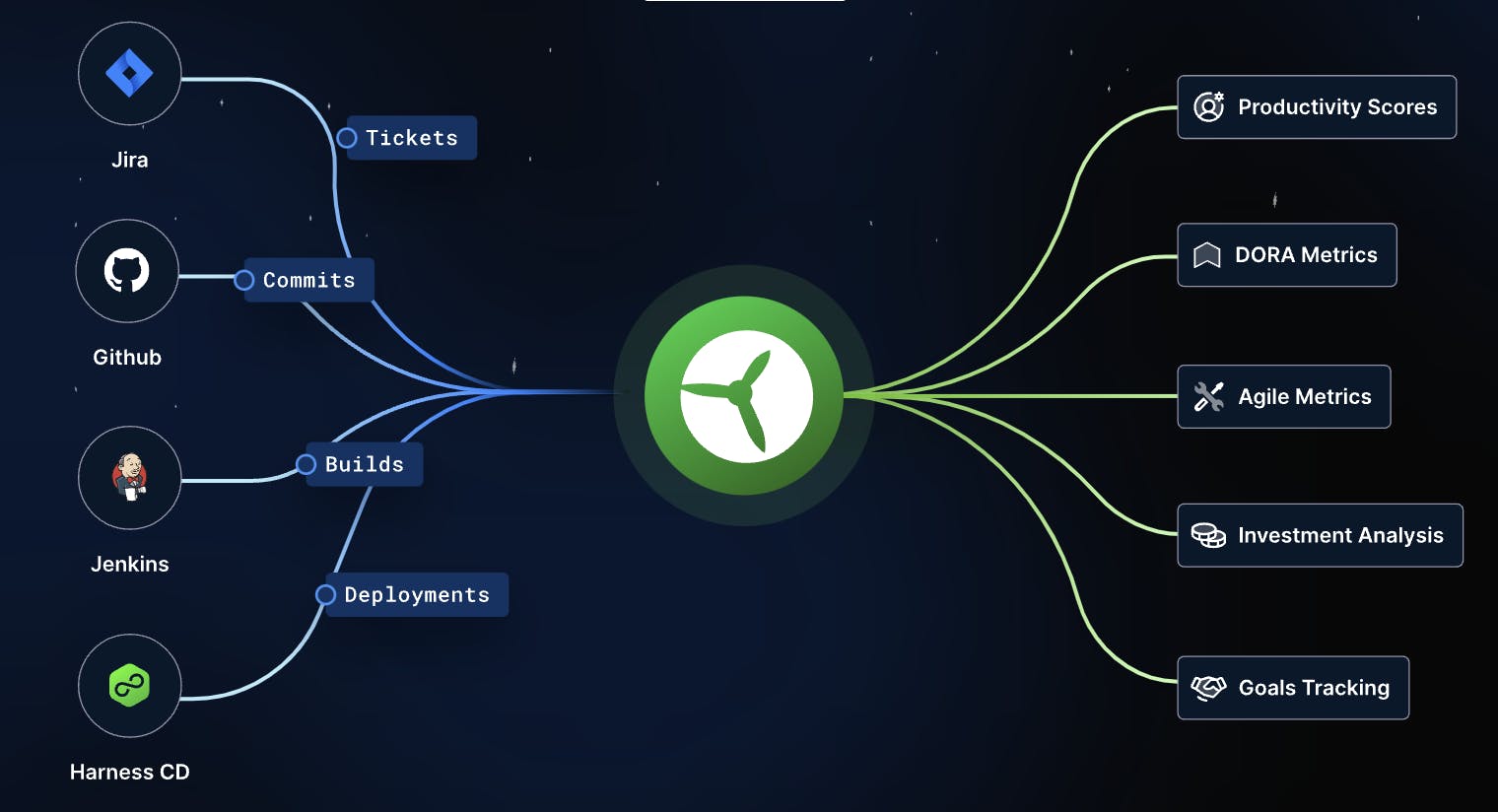
Source: Harness
Harness Software Engineering Insights aids developers in discovering SDLC bottlenecks, assessing overall team productivity, and bolstering the overall developer experience by providing relevant data and insights. By leveraging DORA (DevOps Research and Assessment) and other frameworks, Harness Software Engineering Insights allows developers to pinpoint bottlenecks quickly and understand systemic issues across the broader delivery lifecycle. With scorecards and dashboards highlighting factors impacting sprint predictability, SEI helps assess whether new features and changes will be delivered to customers on time.
Harness continues to expand its existing suite of products within its platform, with continuous error tracking, infrastructure as code management, software supply chain assurance, and an internal developer portal recently made available for public preview. Beyond its core CI/CD offering, the platform includes developer observability and remediation tooling, enabling developers to streamline shipping via automated troubleshooting, infrastructure management, and open-source governance.
Code Repository
Harness Code Repository offers secure, centralized hosting for private Git repositories. It fosters collaboration with advanced access controls and governance, ensuring code security and compliance. It also has features such as pull requests, branching, code browsing, and quality gates, which it integrates within the CI/CD pipeline. It is also intended to help streamline workflows with webhooks, notifications, and automated deployments, boosting development efficiency and reducing manual tasks.
Security Testing Orchestration

Source: Harness
Harness Security Testing Orchestration enables shift-left security testing by enabling developers to configure and run AppSec (application security) scans, facilitating prioritization of urgent vulnerabilities and subsequent remediation with AI guidance. Harness STO ensures that vulnerabilities are remediated prior to product releases — current testing practices are often manual, with siloed visibility and inconsistent governance.
By directly integrating scans with the CI/CD pipeline, Harness STO resolves concerns around delayed feedback by automatically aggregating, normalizing, and deduplicating data to identify vulnerabilities across scanners. By centralizing deduplicated security findings, Harness STO helps manage security risk and strengthen security governance across the SDLC via OPA, open policy agents, and role-based access control (RBAC).
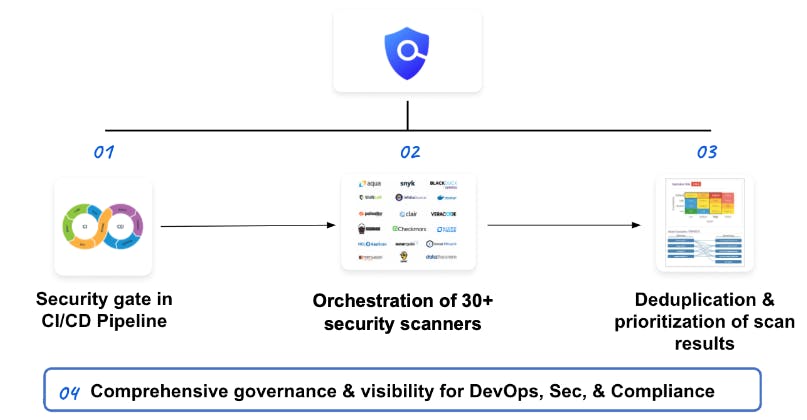
Source: Harness
Harness STO’s solution includes testing (tests code, open source software (OSS) libraries, containers with security scanners), remediation (mitigates security vulnerabilities by triaging vulnerabilities by priority across all scanners and populating dashboards with clear insight into security vulnerabilities), and governance (utilizes governance policies and dynamic security dashboards to resolve security issues prior to production).
Harness Continuous Error Tracking enables developers to identify, triage, and resolve issues; Automated Root Cause Analysis (ARC) screens highlight source code, variable values, and the environment state of the host. Harness CET includes an error tracking agent that runs on a Java virtual machine to monitor run-time exceptions, log events, and any custom events. When an exception occurs, the agent sends relevant statistics and snapshots to a monitored service, which then generates insights via comprehensive dashboards.
Software Supply Chain Assurance
Harness’s Software Supply Chain Assurance (SSCA) proactively identifies vulnerabilities in open-source components, meticulously tracks their impact, and verifies the integrity of software throughout the CI/CD pipeline. It can produce detailed bills of materials (SBOMs) generated automatically, ensuring compliance with regulations like SLSA and Executive Order 14028. SSCA simplifies vulnerability remediation by pinpointing affected components and tracking progress toward fixing them.
Cloud Cost Management
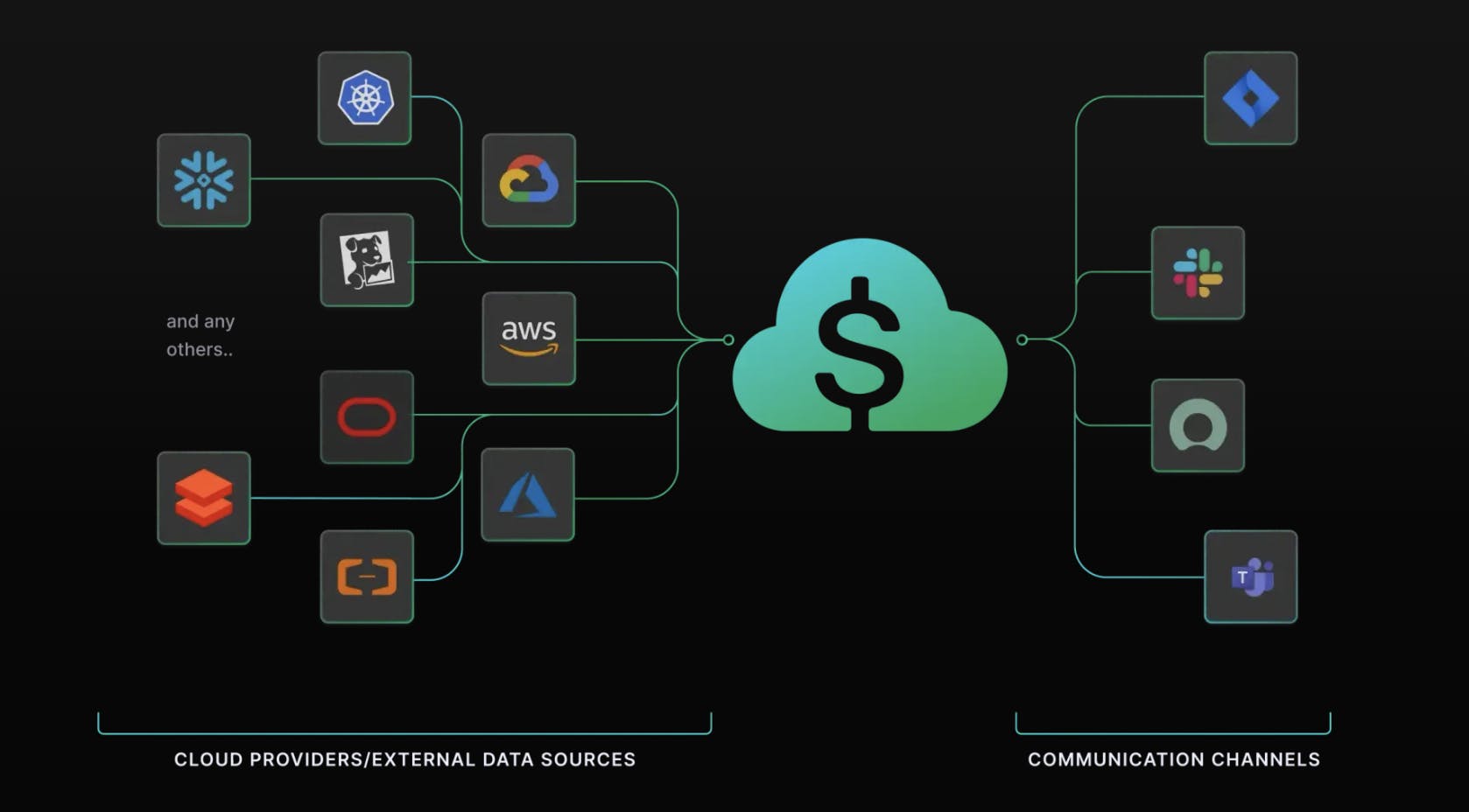
Source: Harness
Harness Cloud Cost Management (CCM) drives FinOps, providing engineering teams with the insights necessary to optimize cloud spend and amplify cost transparency across teams. Given the complexity of modern cloud resource sprawl, optimizing the usage of cloud resources has become crucial. Many cloud cost management tools only provide insights at the project, service, instance type, or tag level, which remains insufficient for DevOps teams looking to forecast deployment costs and measure resources used by active clusters.
Harness CCM’s core features include cost visibility (specific insights into the costs of Harness applications and clusters), cost optimization (identification of cloud resources and services that are idle or underutilized), and cost governance (enables teams to set predetermined budgets and set notification triggers when usage thresholds are exceeded).
Harness CCM addresses core issues around the lack of visibility of application or cluster costs, along with the detection of cost spikes. Teams often lack transparency around cost drivers; Harness CCM provides clarity into cloud platforms like AWS, GCP, and Azure, along with container orchestration tooling (Kubernetes, ECS).
Market
Customer
Harness’s platform equips developers with automated continuous delivery and integration, remediation for failed deployments, and enterprise-grade security. By accelerating deployment time, Harness remains crucial for resource-strapped, lean engineering teams in ensuring consistent, secure releases.
As of February 2024, Harness counts “hundreds” of businesses across various industries among its customers. Notable customers include Kroger, Carvana, United, Vodafone, Genentech, LexisNexis, Priceline, Rakuten, Ulta Beauty, and Squarespace.

Source: Harness
Migrations to the cloud have forced developers to ship faster, with Harness’s pipelines bolstering time-to-value by maximizing developer productivity. United, for instance, reports 75% faster deployment times along with increased compliance with governance policies. Prior to Harness, airport operation applications required nearly 22 minutes; Harness reduced that process to under five minutes. Beyond deployment speed, Harness enables developers at United to build microservices in parallel, facilitating deployment orchestration and the ability to deliver builds sequentially.
Ulta Beauty similarly reports that Harness helps developers increase deployment volume, with over 5K environments per month and over 15K at any given time. From about 100 local sandbox environments prior to using Harness, Ulta has seen a deployment volume multiply by over 50 times. At Iterable, Harness helped increase deployment velocity 3x from 150 monthly deployments to over 500 deployments, decrease downtime risk by 85%, and reduce rollback time from four hours to 20 minutes.
Market Size
There were 26.9 million software developers across the globe in 2022. The DevOps market was valued at $10.4 billion in 2023 and is projected to reach $25.5 billion by 2028 (a 19.7% CAGR). As of February 2020, businesses spent $2 trillion each year on developer salaries, but delivering code into production remains a process riddled with custom scripting and manual oversight.
Meanwhile, the market for CI tools alone is expected to grow from $1.2 billion in 2023 to over $3.1 billion by 2028 at a CAGR of approximately 21.2%. But Harness isn’t a pure CI tool in the same manner as incumbents like Jenkins — Harness CEO Bansal described how Harness’s approach differs as follows in May 2023:
“People almost use CI/CD as one word; it's really two different words and two different practices. In CI, the personas that need to be involved are different; it's mostly developers and QA. When you start getting into CD, you have everyone from security, governance, compliance, infrastructure management, cost management, and then SREs; everyone has to be involved in the production deployment process . . . You have to bring (security, cost management, compliance), and that’s the only way to ship to production every day.”
Beyond CI/CD tools, specific features like chaos engineering within the Harness platform resolve unexpected downtime, which is estimated to cost businesses almost $550K per hour when it occurs. For consumer-facing companies, each minute of site outage can lead to losses in the hundreds of millions of dollars, especially if sites are largely reliant on ad impression revenue. Beyond losses attributable to outages, development teams often grapple with long-standing issues that result even after services are fully restored. Partners, sellers, and users interacting with the platform may churn, especially when points of failure directly impact their experience with the platform as a whole.
Competition
Gitlab: Gitlab, founded in 2014, is one of Harness's largest competitors. GitLab is a web-based platform that combines Git, a version control system for code, with other tools for software development, like issue tracking, project management, and continuous integration/continuous delivery (CI/CD). It can be thought of as an all-in-one hub for developers to write, track, test, and deploy code collaboratively, streamlining the software development lifecycle from planning to production. The company went public in October 2021 and has a market cap of $10.9 billion as of February 2024.
Jenkins: Jenkins is an open-source automation server that enables developers around the world to reliably build, test, and deploy their software. Initially developed in 2004 by Kohsuke Kawaguchi at Sun Microsystems, the project was officially forked by Oracle in 2011 and renamed from Hudson to Jenkins. Although Kohsuke initially developed Jenkins for continuous integration (CI), Jenkins orchestrates the entire software delivery pipeline (CD) spanning building, testing, and deploying, facilitating continuous integration, and continuous delivery. Broadly, Jenkins is commonly used for building projects, running tests to detect bugs and other issues, static code analysis, and deployment.
Ease of use is perhaps the largest differentiator between Harness and Jenkins; Jenkins requires initial setup along with additional scripting to extend the solution to a viable CD candidate whereas Harness incorporates declarative pipelines without significant overhead. With over 1.9K plugins as of February 2024, managing and maintaining plugins in Jenkins can prove tedious (especially when considering plugins like BlueOcean with ~20 dependencies).
Beyond dependencies, vulnerability issues might arise that are resolved for specific versions but left unresolved for others, developers may opt to stop updating plugins altogether, leaving room for vulnerabilities. Jenkins doesn’t provide native metrics dashboards, forcing developers to depend on third-party integrations to achieve desired reporting. Harness provides relevant key metrics (lead time, deployment frequency, mean time to restore, change failure rate) and enables developers to set alerts as needed.
Buildkite: Founded in September 2013, Buildkite, which operates a hybrid CI/CD model for users to host testing and deployment pipelines, raised a $21 million Series B in November of 2022 which brought the company’s total funding to $38.9 million. The platform helps developers offload the user experience for pipeline management to a cloud interface, enabling teams to achieve performance parity with production systems, and simplifying the process of development especially relative to self-hosted CI/CD alternatives.
Buildkite provides an intuitive setup and configuration process, enabling developers to create custom logic to override innate logic. As of February 2024, over 100 containerized plugins are available across integrations and extensions, and Buildkite supports the bulk of commonly used languages. Harness’s Drone similarly offers containerized plugins but differentiates by seamlessly scaling on demand, allowing developers to spend less time maintaining tools or waiting for slowdowns to resolve. Unless developers have a simplistic setup, Buildkite necessitates scripting; Drone tends to be more intuitive to developers regardless of setup and is mostly configured as code.
Datadog: Founded in 2010, Datadog provides a unified observability platform across log management, application performance monitoring (APM), security monitoring, network monitoring, synthetic monitoring, and real user monitoring. As of February 2024, Datadog’s market cap stands at approximately $42.7 billion, with the company reporting over 3K customers with ARR of $100K or more in November 2023, or an increase of 20% from the 2.6K customers it reported in September 2022.
The platform helps developers monitor, troubleshoot, and optimize application performance by tracing requests from distributed systems, analyzing log data in context, and proactively monitoring user experience. Notably, Datadog provides a comprehensive suite of tools for cloud infrastructure and performance monitoring, but the platform lacks extensive cloud cost reporting, particularly in terms of support for multi-cloud, Kubernetes, or other cost-saving features. Enterprise cloud infrastructure largely spans multiple cloud providers, with cloud-native deployments leveraging shared cluster resources and Kubernetes being used in the bulk of deployments.
Datadog provides only a monolithic cost report for all Kubernetes infrastructure, complicating the process of tracking cloud spend in a manner that can be conveyed to external stakeholders. Datadog doesn’t provide a cost optimization solution with a full suite of features. Harness’s auto-stopping feature enables users to proactively identify idle cloud resources via dynamic anomaly alerts. Automated reporting remains critical for minimizing cloud spend; Datadog provides cost information but lacks the granular recommendations and reporting necessary for cost savings.
LaunchDarkly: Founded in 2014, LaunchDarkly helps companies gain visibility and control over software launchers, providing developers with insights into how users interact with their products and ensuring that software releases remain safe and reliable. The company raised $200 million in Series D financing from Lead Edge Capital in August 2021, bringing its total funding raised to $330.3 million as of February 2024. LaunchDarkly’s feature flags provide granular control over the software development process by allowing developers to decide which users and how many can see or utilize new features. New features, for instance, can be introduced to a smaller percentage of users by region, allowing companies to test specific features while core functionality continues to operate.
Harness’s feature flags are integrated directly into the CI/CD pipeline while LaunchDarkly, a third-party tool, remains abstracted from the unified CI/CD process. Within Harness, users can create automated, repeatable pipelines in Workflows; automated verification features enable developers to assess the health of live features and remediate any vulnerabilities. Specifically, developers can generate reporting and dashboards by consolidating analytics across the development process, linking feature flag data to the rest of the SDLC.
Gremlin: Founded in 2016, Gremlin provides reliability testing and chaos engineering tools, recreating outages and highlighting availability risks with enterprise-level safety and security. By deliberately introducing stress or failures in a controlled environment, Gremlin helps reliability engineers detect and locate weaknesses before they begin to impact real users. Pre-built reliability tests help engineers find, fix, and validate unidentified reliability risks, with dashboards helping to identify reliability risks and track progress over time at scale.
Harness Chaos Infrastructure includes resilience probes for developers to query HTTP responses, Kubernetes services, and Prometheus metrics; resilience probes can be configured to run before, during, or after the experiment execution for greater clarity in system monitoring. Gremlin’s status check feature forces developers to manually set up a health status, and the platform only provides support for only basic configuration, which constrains experiment monitoring. Gremlin says that it is used by over 100 members of the Fortune 2000, including five of the 7 biggest US banks, as of February 2024. It raised an $18 million Series B in 2018 led by Redpoint’s Tomasz Tunguz which brought the company’s total funding to $28 million.
Business Model

Source: Harness
Harness offers three pricing tiers: free, startup, and enterprise.
Free: This tier is ideal for individuals or small teams getting started. It includes basic CI/CD features for one user and one pipeline.
Startup: This tier is designed for growing companies and starts at $57 per developer per month (with annual billing). It includes all features of the Free tier, plus unlimited pipelines, GitOps integration, and basic security features.
Enterprise: This tier is built for large organizations and requires custom pricing. It offers all features of the Team tier, plus advanced security, governance, and scalability capabilities.
Traction
In February 2020, Harness reported that its revenue had increased 400% in the prior year. As of November 2022, 17 million deployments had been made with the Harness platform. In February 2023, Harness was accepted into Platform One, or the US Air Force’s (USAF) DevSecOps platform. Harness’s headcount has tripled from January 2021 to April 2022, and the company has about 875 employees as of February 2024. As of February 2024, Harness counts “hundreds” of businesses across various industries among its customers. Notable customers include Kroger, Carvana, United, Vodafone, Genentech, LexisNexis, Priceline, Rakuten, Ulta Beauty, and Squarespace.
Valuation
Harness raised $230 million in funding at a $3.7 billion valuation in April 2022. This Series D, led by Norwest Venture Partners included participation from GV, ServiceNow Ventures, Citi Ventures, Capital One Ventures, Splunk Ventures, and more. The round brought the company’s total funding to $425 million. Harness’s $85 million Series C took place in January 2021 at a $1.7 billion valuation led by Alkeon Capital, included participation from Citi Ventures, Sorenson Capital, Thomvest Ventures, IVP, Battery, Rally Ventures, and Norwest Venture Partners.
Key Opportunities
Bringing AI to DevOps
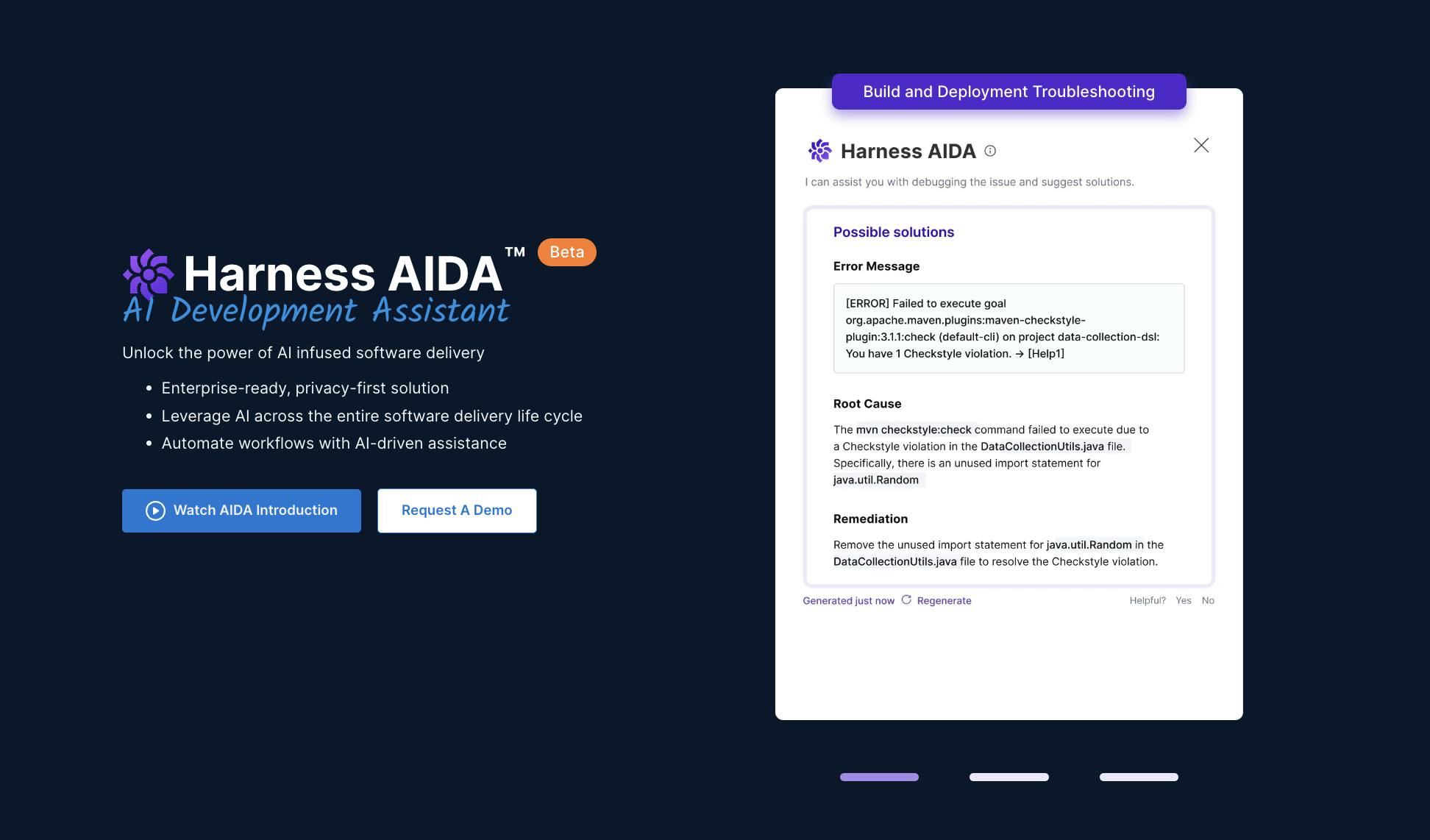
Source: Harness
The release of Harness’s AI Development Assistant, AIDA, took place in June 2023. It may help bolster developer productivity by 30-50%, aiding developers in the resolution of builds and deployment failures and obviating the need to sift through log lines by predicting code errors before builds are initiated. Trained on all publicly known common vulnerabilities and exposures (CVEs) and common weakness enumerations (CWEs), AIDA helps identify security vulnerabilities and generate code fixes, reducing developer effort by up to 75%.
From models trained on security best practices, AIDA can generate nuanced explanations for specific vulnerabilities and suggest relevant remedies, improving application security and code integrity. Specifically, AIDA provides automatic pinpointing and insights into root causes, providing accelerated troubleshooting and mitigating the need for manual log analysis. Traditional security tools lack the same actionable recommendations tailored to their codebase; AIDA analyzes log files, correlates error messages with already known issues, and suggests fixes for the resolution of deployment failures.
AIDA also aids in cloud asset management, helping developers manage assets in natural language, or enabling them to define policies for cost control without manually defining such rules. Notably, Harness doesn’t utilize company-specific proprietary data, with LLMs being trained on data with permissive licenses. Additional roll-outs of automated code reviews, CI/CD pipeline authoring, and AI-assisted authoring of chaos engineering may expand Harness’s feature flywheel, enabling developers to effectively deliver high-quality applications.
Expanding Its Developer Offering
Strategic acquisitions of companies like Drone.io in August 2020 and Propelo in January 2023 have lent Harness to establish wider coverage across the SDLC, helping reduce developer task burden by providing complete visibility across the toolchain and identifying bottlenecks in troubleshooting deployments. By integrating features like ChaosNative Litmus within the existing software delivery platform, Harness continues to expand its value chain in reducing downtime across distributed environments, reducing mean time to resolution (MTTR), and providing a more intuitive user experience.
Key Risks
Competitive Landscape
Harness intends to provide a full-service platform for developers that spans the SDLC, but competes with a number of point solutions across its umbrella of features. Harness Chaos engineering, for instance, overlaps with Gremlin’s offering while Jenkins provides similar features to Harness’s CD tooling. Point solutions spanning security testing orchestration to cloud cost management compete directly with Harness’s end-to-end platform, meaning that developers can opt to construct their own workflows around preferred tooling, even if such a decision means orchestrating the process on their own.
As Harness continues to establish coverage across the SDLC, developers may increasingly look to the platform to accelerate deployment, but external tools beyond Harness’s core CI/CD may prove preferable to Harness. For instance, solutions like CloudZero or Kubecost could be adopted over Harness’s CCM, even though Harness holds an advantage in native integrations with its CI/CD pipelines.
CI/CD Adoption for Legacy Companies
While CI/CD solutions provide the promise of developer efficiency in the form of expedited deployment cycles and improved software quality, transitioning to CI/CD can prove difficult for legacy companies. Rapid alterations to the existing CI/CD environment can expose issues with data security, so developing standardized testing and security protocols within the pipeline can become essential to maintaining compliance. Migrations to CI/CD can highlight existing technical debt and bottlenecks, requiring engineering teams to consider the resolution of issues while allocating sufficient resources for the transition. Subsequent integration may require leveraging of middleware or connectors to bridge gaps between legacy systems and newly adopted CI/CD tooling.
Summary
Harness is a platform for software delivery. Developers increasingly require secure, optimized mechanisms to release applications into production, and Harness provides a suite of tools ranging from continuous integration to chaos engineering to optimize the software delivery lifecycle. Given the complexity and nuance in modern development processes, tools like Harness have become critical for building, testing, deploying, and verifying software. Harness intends to help developers across the globe deliver code in a reliable, efficient manner while ensuring deployment velocity. As Harness broadens its coverage with strategic acquisitions and rollouts of adjacent features, the platform continues to evolve, optimizing existing tools and releasing open-source offerings.
